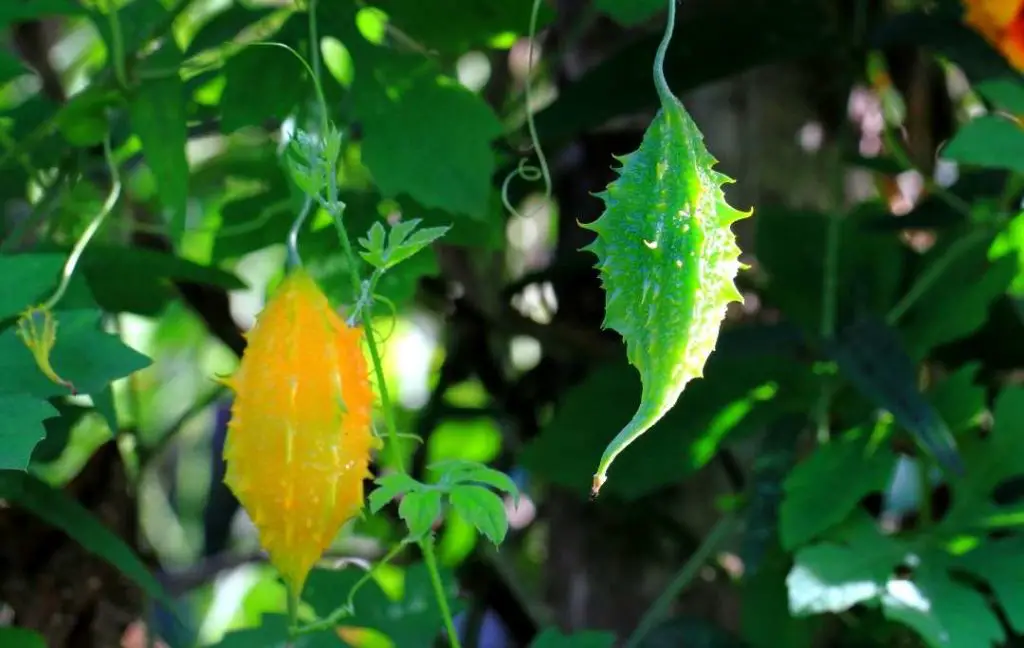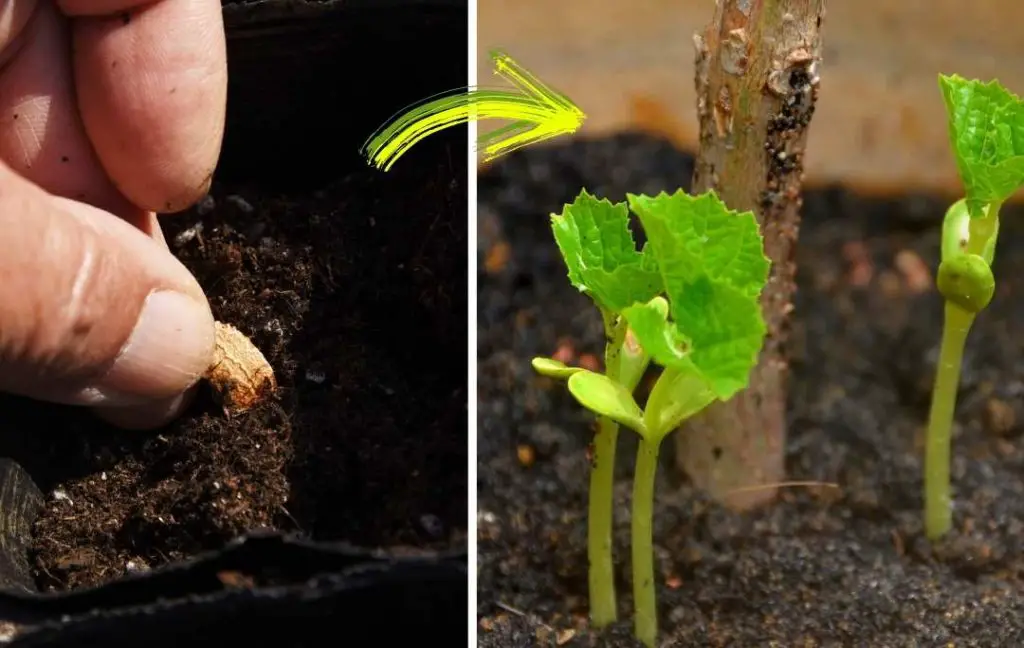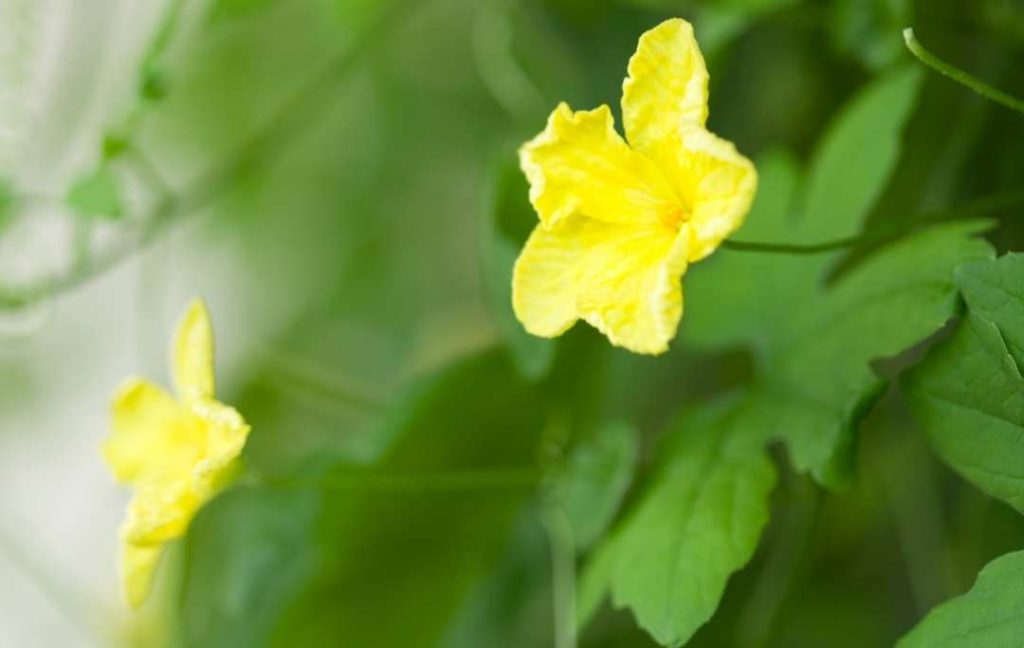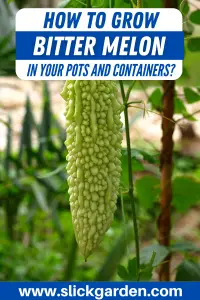Bitter melon is also a fruit-bearing vine. Its deep green leaves light up the garden. It is bitter in taste but its numerous benefits highlight its importance. If left uncultivated in the garden, it grows big and bears fruit long in size. You can grow bitter melons by seeds everywhere like in gardens and in pots.

Bitter melon grows in warm conditions where they receive 7-8 hours of sunlight. You should always use trellises to grow bitter melon plants. Here is the complete process to grow bitter melon from seeds to harvest:
Place And Soil:
Bitter melon is a bright light plant. It grows well in warm places. It thrives well in daytime temperatures of 75 to 80F. Bitter watermelon does not like clay and sandy soil. They grow easily in well-drained soil with compost. Use potting soil if you are growing in containers.
Soil pH also has a major effect on plants. Bitter melon plants grow in the 5.5 to 6.7 pH of the soil. It is important to choose a place where the sun shines for 7 to 8 hours so that the plants are well warmed.
Planting Time:
Bitter melons are warm plants so they thrive well in hot weather. These plants are sown in late spring or early summer. The first thing you should do is check the temperature if it is close to 65 or 60 F then plant the seeds otherwise wait for the weather to warm up.
Sowing Seeds:

After selecting the soil and place now it is time to sow the seeds. Sow the seeds to a depth of 2 inches, keep the distance of 6-7 inches between the seeds and water them lightly.
They will germinate after 8 to 10 days. When the seedlings are strong and produce true leaves, plant them at a distance of 3 – 4 feet. If you have less space to grow them, you can use trellises to grow these vines vertically.
Plant In Pots:
If you have a small place don’t worry you can easily grow bitter melon in the pots. You can also use grow bags instead of other kinds of pots. Prepare the soil in pot sow the seed and give water.
Because these plants are fruit-bearing they will need a good amount of nutrients to produce a good amount of fruits throughout the whole season.
You should use good quality potting soil and liquid fertilizers once a week. I never use any fertilizers for my plants because I use really good quality potting soil (manure + compost + garden soil).
Pollination:

Bitter melon vines first produce male flowers then a few days later female flowers. At this point, give the bees and other insects a chance to move the pollen grains. Because male flowers bloom for a short time and fall quickly.
Hand Pollination:
Bitter melon is pollinated by bees and insects. If you only see flowers on your vine for a long time except for fruits. So this means that the flowers have not yet been pollinated.
And if there are no bees to pollinate, you can pollinate by hand. When both male and female flowers are born, pick the male pollen grains by hand and transfer them to the female flowers. In this way, after some days the flowers of the vine will be converted into fruits.
Fertilizers:
Plants need good food after replanting. Fertilize them with organic fertilizers (or you can make your own compost) twice a week and give them water according to their needs, check the soil if it feels dry give them water.
Use of Trellis:

The use of trellis protects the vines in many ways. This prevents the vines from rotting due to excess water. You can adjust the size of the trellis to suit the space of your garden and the size of the vine.
Due to the trellis, the vines produce more fruit and flowers. The bitter melon vines that grow with trellis produce straight and long fruit.
Plant Care:
Care is very important for the good growth of plants and the prevention of diseases. Plants that grow along the trellis, when they reach the trellis, cut off their overgrown branches. Because of this, the vines will produce more fruits and flowers.
The vines that grow on the ground have a higher risk of rot due to excess water. So you should use dry straw or use plastic mulch to protect the plants. So that the fruits can be saved from fungal infections and other diseases.
Diseases and Pest:
Bitter melons are attacked by many pests and harmful insects that cause diseases. Due to this, the vines break and the fruits rot. To avoid this, use a pyrethrum-based spray. Also, cover the fruit with a sheet of paper so that the flies do not attack.
Grow Veggies Vertically Without A Garden
Harvesting:
Bitter melons bear fruit 12 to 16 weeks after planting. When the fruit is 4 to 6 inches long, cut it. If the fruit is not removed for a long time, it will ripen. Their color changes from green to yellow. Fruit picking provides space for the new fruit to germinate.
And if you want to get the seeds, do not cut the fruit and let it ripen on the vine. When it turns orange and red on the inside, Then take out the seeds in the pulp. At the last, you harvest many healthy yields and also store the seed for the next yield.
